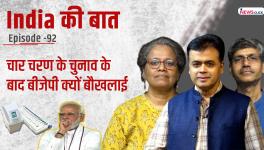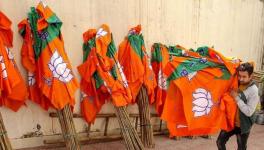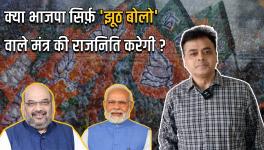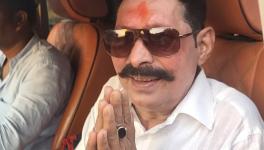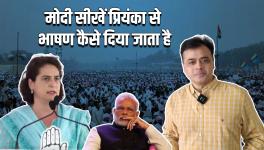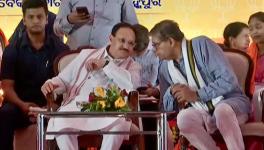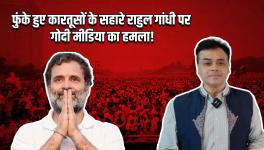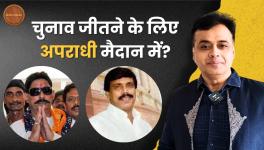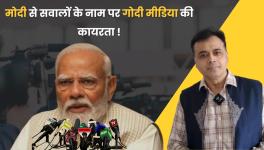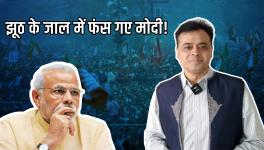Defeating BJP Is Not Merely About Electoral Maths
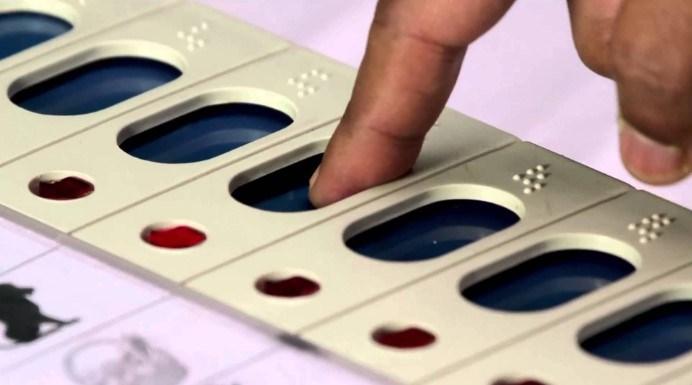
There is a justifiable air of optimism among the opposition political parties after the latest round of by-polls. This is reflective of hope among common people across the country. Remember, more than two thirds of the people voted against the Modi-led BJP in 2014. And a whole lot of people who had voted for Modi, believing in his promises of giving jobs, better incomes to farmers and rooting out corruption, have also switched sides, disillusioned and betrayed. Undoubtedly, the BJP-RSS is on the back foot because of growing discontent with its failed policies and its aggressive divisive politics. This has led to people beginning to turn against it, reflecting to some extent in electoral fortunes too.
But the narrative espoused by most opposition political parties, and the mainstream media, that all that is required to defeat Modi and BJP is the Opposition to get its act together and unite in the forthcoming electoral battles should be taken with a pinch or two of salt.
Of the 27 by-polls held after Modi’s victory in May 2014, BJP and its current allies have lost 9 sitting seats bringing its own tally in the Lok Sabha down from 282 to 273. More importantly, the trend of these losses is accelerating with 8 of these losses taking place in 2017 and 2018. This is not really surprising because the disillusionment of people is also accelerating as time passes.
Also BJP vote shares in many seats have dipped, as most dramatically shown in Kairana, but also in Palghar and Bhandara-Gondiya. In Kairana, BJP vote share dropped from 50.6% to 45.7%. In the two Maharashtra seats, BJP contested the 2014 election in alliance with Shiv Sena while this time they fought separately. So the decline of vote shares – from 53.7% to 30.8% in Bhandara-Gondiya and from 50.6% to 41.5% in Palghar – is not totally BJP’s loss. But presumably there is some decline.
But now look at it from a different perspective. Despite the huge realignment in Kairana with all Opposition parties united behind the RLD winner, BJP has still got nearly 46% votes. Dalits are angry with BJP, cane farmers are up in arms at pending dues, Muslims are against them because of relentless attacks by the BJP and Sangh Parivar. Yet they got a substantial vote.
In most of the by-polls, and for that matter in most of the state Assembly elections held since 2014, the BJP is managing a fair share of votes and even slightly increasing it in some. You can describe it – correctly – as a defeat in the sense that despite all the tall claims and propaganda about Modi’s policies and Amit Shah’s so called electoral machinery they are not increasing their vote shares.
But neither are they losing it in any substantial way. Even in the face of a united opposition, BJP is still managing to get at least a third of the votes, and in many places substantially more.
Why is this so and what are the implications? Part of the reason lies in the fact that people who were tired of the Congress and several regional parties and hence started supporting the BJP are still not convinced about today’s opposition. Is this getting together a mere act of political opportunism or does the united opposition offer any new workable policy alternatives on burning problems like the agrarian crisis and jobs? The answer is not clear to most people. In fact, it appears that they do not offer new alternatives.
Another more ominous factor behind the continued support for BJP is that through these years they and their aggressive associates of the Sangh Parivar, have managed to spread their ideas of religious bigotry and poison far and wide. Readers will recall the communal violence that engulfed 13 districts of Bihar and several others in adjoining West Bengal in March April this year. Brazen display of armed power by Hindu fanatics and their provocative actions, on the occasion of Ram Navami, had led to this manufactured violence against the minority communities.
Also recall that in Modi’s four years, incidents of communal violence have increased by 28%. There have been nearly 3000 communal incidents which have taken a toll of about 400 lives and left nearly 9000 people injured. Every election – from gram panchayats to Lok Sabha – sees open communal campaigning. Practically every institution in the country is now vitiated by appointments of RSS supporters who steer decision making towards falling in line with the communal and medieval ideology that the RSS adheres to.
There is no escaping the fact that this communalisation of Indian politics has increased and that its benefits are being reaped by the BJP for political purposes, and the RSS for its objective of establishing a Hindu Rashtra.
Most political parties in India, barring the Left, face a difficulty in fighting the BJP because they are unable to rouse or attract the people on both counts – alternative people-oriented economic policies and alternative secular politics. They condemn the BJP for joblessness or price rise or falling farmers’ incomes but have no alternative to offer. They condemn the BJP for Hindutva, but themselves go around visiting temples while electioneering.
Just getting together to fight some seats, or maybe the whole general elections, may give some arithmetic advantage but in order to ideologically defeat the BJP-RSS and their associates, people have to be brought together under a banner of fight for alternative policies and end to division in the name of religion or caste.
Get the latest reports & analysis with people's perspective on Protests, movements & deep analytical videos, discussions of the current affairs in your Telegram app. Subscribe to NewsClick's Telegram channel & get Real-Time updates on stories, as they get published on our website.









